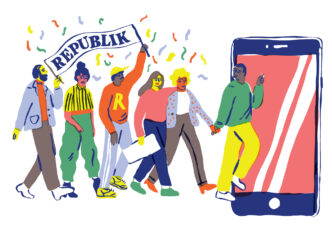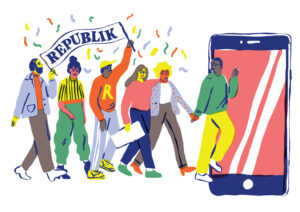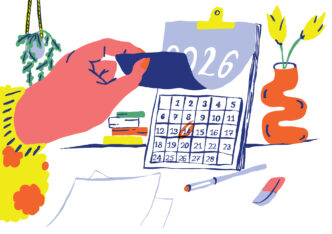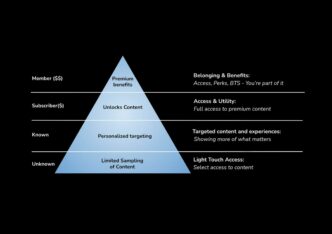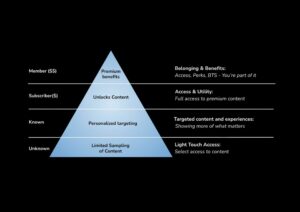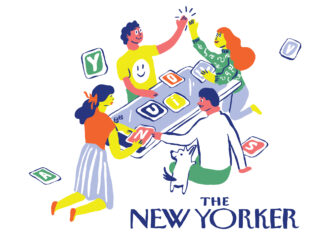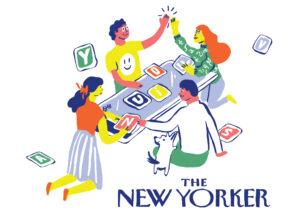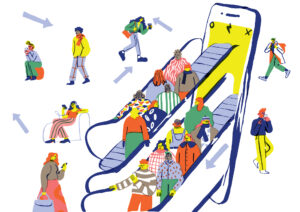

I'm guessing that you're a fan of subscriptions, otherwise you're in the wrong place. But, unfortunately, not all of our users and readers are as enthusiastic about this model. Some are frustrated by all the paywalls and want alternatives. Luckily for us, there are providers who want to target these people in particular. Below I have collected a few examples for you , providing an overview of when it is worth thinking about alternatives.
When I tell strangers that I produce a podcast about subscriptions (“Subscribe Now” for those who don’t know me), I often hear the reaction: “I don’t want a subscription, I want to be able to buy individual items.”
Of course, I then answer that micropayments in journalism have been tried a thousand times and have failed just as many times. This also explains these survey results from the Reuters Institute:

But I always feel a bit unimaginative when it comes to the answer, because in times of rising subscription prices and subscriptions for every area of life, many are carefully checking which subscriptions are really worth it.
That’s why today I’ve collected examples for you of how different providers want to reach a target group that simply doesn’t want to subscribe.
12 alternatives for those who don’t want to subscribe
1/ Stiftung Warentest: Individual purchase

You have to search a bit until you find a relevant portal that still offers individual purchases. Stiftung Warentest, the traditional german product review institution, is of course well positioned here, because if I’m specifically looking for the best frozen fries, then €4.90 is a good investment. Or do you want to eat fries that taste like soggy cardboard for the rest of your life?
Alternatively, engaged users can also take out the flat rate, which seems more attractive at €3.33 per month – but due to the minimum term contract of 12 months, it’s only worth it if I want to read at least 8 tests.
2/ Kölner Stadt-Anzeiger: Coins

This is probably one of the most ambitious and experimental approaches in recent years. Micropayments often fail because the effort is too great for a few cents per item, which is why KStA allows you to buy several items at once. To do this, you load a wallet with coins and gradually spend them on individual items. Basically like a rechargeable card for buses and trains.
3/ Spotify India: Day Pass

I find this model very charming: If you can’t or don’t want to purchase a monthly subscription in India, you can buy a day pass for the equivalent of 8 cents and listen to up to 30 songs. Maybe you’ll get a taste for it and want to subscribe after.
What’s interesting is that one-time payments seem to be fairly successful in India, as you can also buy a 2-month package.
4/ GeneratePress: Lifetime package

I recently spent a lot of time looking for suitable plugins for my new WordPress website (advertising: www.subscribe-now.de ) and noticed that the large template builders often offer a lifetime option.
It’s interesting that Generate Press’s package is relatively expensive with a payback period of 4.22 years, but it probably has to be in order to achieve a comparable customer lifetime value and cover the costs of lifelong updates and support.
By the way, I decided to subscribe. But that won’t surprise you.
5/ Rabbit R1: Purchase individually

Have you ever seen that little orange box? At the beginning of January, the Rabbit R1 was one of the most discussed gadgets at CES in Las Vegas.
The developers promise nothing less than the successor to the smartphone – based on AI, of course.
Even though I find the device a bit nonsensical, I noticed that they explicitly advertise that, unlike ChatGPT and the like, you have no ongoing costs. In fact you can make AI requests every day for a one-time fee of $199 until the device breaks.
Incidentally, this did not contribute to the credibility of the business model, as the server costs could become expensive in the long run.
6/ Fortnite: Season Passes and In-App Purchases

Fortnite has made over $20 billion in revenue in the last 6 years, despite the game being free. There is an industry trend behind this that has to do with DLC (Downloadable Content) and in-game currencies.
Because, if you want cool outfits for your character and special rewards, you need V-Bucks. And they cost real money, e.g. €8.99 for 1000 Bucks. Once exchanged, the player loses the concept of money and willingly spends the new currency on knick-knacks.
There are also packages for longer periods of time. Video games are often time-limited season passes that give you access to certain content and benefits within the current season. There are two levels of this in Fortnite: The Battle Pass and Fortnite Crew.
7/ Affinity Designer: Individual purchase

We learned in my very first podcast episode that Adobe is very successful with the Creative Cloud . But at the same time, with their consistent shift to the subscription model, they’ve left a gap in the market that providers like Affinity want to close. Their software is positioned as a clear alternative to Photoshop and the like, but with a different (more user-friendly?) business model.
8/ Babbel: Lifetime

Language learning is a life’s work. And if you’re serious about it, there’s Babbel Lifetime. Compared to the basic subscription (€9.99 per month), the Lifetime package pays for itself after 30 months and, in contrast to the normal packages, you’re not limited to one language, but can continue using the platform for any other languages in the future.
9/ Challenges: Advertising

Surprise, you can also finance journalism through advertising. The older ones among us even remember a time when this was the standard (and hardly sustainable for most).
For a long time, Challenges offered frustrated users an advertising-financed alternative to paid journalism.
10/ RND: only €36.60 once

Finally, two examples that are actually not a real alternative to a subscription – but (in my opinion) that’s how they should sound. RND advertises annual access that costs €36.60 as a “one-time” payment.
You can see on the next page that this is not actually a one-off, but is automatically extended afterwards and costs €7.99 per month.
I don’t want to say that customers are being deceived here, at least that’s clear to see, but I still find it striking that the offer doesn’t sound like a subscription at first.
11/ SZ: Monthly pass

The SZ also works with an interesting formulation: I don’t buy a subscription there, but rather a monthly pass that is “valid for at least 30 days” and is then automatically extended. In the small print it is also called subscription.
If anyone from the SZ is reading here: How does this formulation perform in your AB tests?
12/ The Pioneer: Lifetime status

€5,000 for a subscription? What probably started as a gag at the editorial conference turned out to be a surprise success in December.
The promotion, which was limited to 100 places, was sold out after a short time and there is now even a waiting list for the next drop.
At least at that price you don’t have to worry about the CLV and I’m glad that the days are over when you could have gotten an NFT for such an offer.
Bonus 13/ The Guardian, Correctiv & NPR: Donations

Donations are, of course, an important option. Publishers with a public mission and, for example, uncover grievances with their investigative research, can often rely on the goodwill of the public.
If readers are told transparently and convincingly why their contribution is important, people are willing to donate to journalism.
The most sustainable option is to convince readers to support you directly in the long term instead of making a one-off donation. It’s basically like a subscription, except that readers aren’t paying for an exclusive offer, but instead supporting content that should be available for free to the general public.
And a collection of publishers who have run into difficulties have also mobilized their fanbase (like a form of crowdfunding) to avoid imminent bankruptcy, such as the satirical magazine Titanic or Katapult.
In both cases, donations were not tax-deductible, but fans were prepared to buy overpriced fan products such as T-shirts and mugs via the store in order to help the publisher’s survival.
While Correctiv only relies on donations, the Guardian and NPR model is an alternative to subscription, where you not only get a good feeling, but also exclusive offers.
Conclusion: When is a subscription alternative worth it?
Even after this research, I remain convinced that regular subscription is the more convincing model in most cases. There are just too many arguments in favor of it, including:
- Long-term predictable revenue that can be invested in products and customer service
- High customer lifetime value in relation to customer acquisition costs
- Simple user experience
- Motivation to keep customers satisfied in the long term with a good product
- Valuable customer data
- Brand loyalty
- …
Nevertheless, in some cases it may be worthwhile to offer customers an alternative…
- If you have a lot of occasional visitors who have a unique interest (e.g. reading a specific test result from Stiftung Warentest)
- If you have high abandonment rates at the paywall and high churn rates that you can’t get under control despite your efforts
- If you have strong incentives for customers to spend a lot of money through micropayments (e.g. Fortnite)
- If you have fans with deep pockets who are willing to pay for special status (e.g. The Pioneer)
- If you consciously want to differentiate yourself from competitors (e.g. Affinity)
But there are also risks that you should be aware of:
- Lower customer lifetime value due to decreasing ARPU and/or a shorter customer relationship
- Poor conversion due to too much choice and confusion on the paywall if you offer both options
Which alternatives to subscriptions convinced you? Or do you think that subscriptions have become established and it is no longer worth testing alternatives? Message me on LinkedIn.

